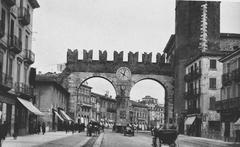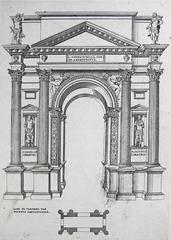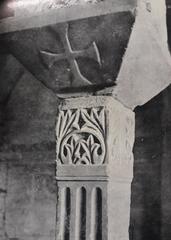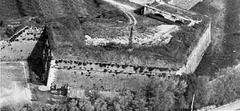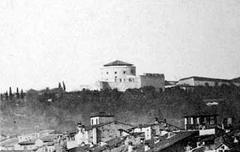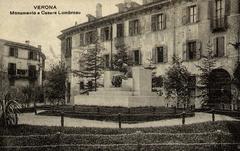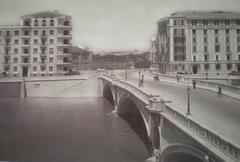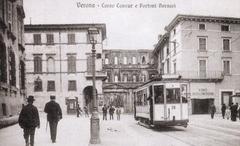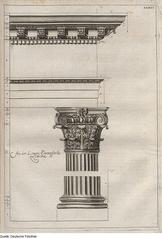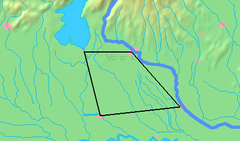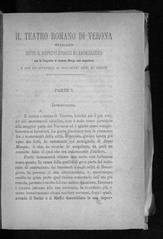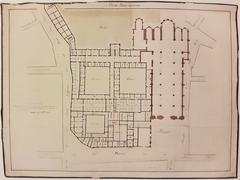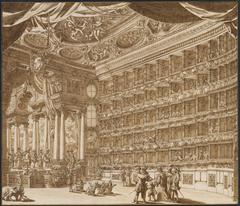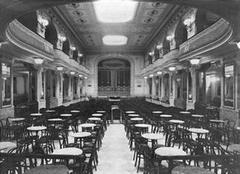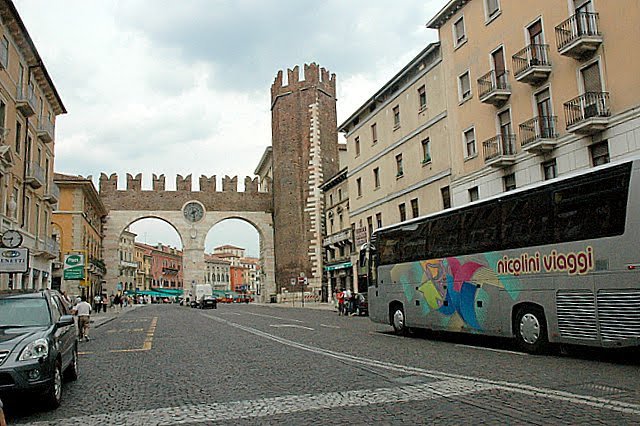
Visiting Portoni della Bra in Verona: A Complete Guide
Date: 23/07/2024
Introduction
Verona, a city steeped in history and romance, offers visitors a chance to walk through time with its well-preserved monuments and landmarks. One such iconic structure is the Portoni della Bra. Situated at the entrance to Piazza Bra, this historic gateway has been a silent witness to Verona’s evolution from medieval times to the present day. Constructed in the 13th century during the rule of the Scaliger family, also known as the Della Scala, the Portoni della Bra was originally part of Verona’s defensive walls, designed to protect the city from invasions. Over the centuries, it has undergone various architectural transformations, including significant renovations during the Venetian Republic’s rule in the 16th century, which added the distinctive clock tower that graces the structure today (UNESCO, Verona Tourism, Arena di Verona). This guide aims to provide a comprehensive overview of Portoni della Bra, covering its historical significance, architectural evolution, practical visitor information, and nearby attractions, making it an indispensable resource for anyone planning to explore this fascinating gateway to Verona.
Table of Contents
- [History of Portoni della Bra, Verona, Italy](#history-of-portoni-della-bra-verona-italyhistory-of-portoni-della-bra-verona-italy)
- [Origins and Construction](#origins-and-constructionorigins-and-construction)
- [Architectural Evolution](#architectural-evolutionarchitectural-evolution)
- [Historical Significance](#historical-significancehistorical-significance)
- [Practical Visitor Information](#practical-visitor-informationpractical-visitor-information)
- [Visiting Hours](#visiting-hoursvisiting-hours)
- [Ticket Information](#ticket-informationticket-information)
- [Travel Tips](#travel-tipstravel-tips)
- [Cultural Impact](#cultural-impactcultural-impact)
- [Preservation Efforts](#preservation-effortspreservation-efforts)
- [Visitor Experience](#visitor-experiencevisitor-experience)
- [FAQ](#faqfaq)
- [Conclusion](#conclusionconclusion)
- [Call to Action](#call-to-actioncall-to-action)
History of Portoni della Bra, Verona, Italy
Origins and Construction
The Portoni della Bra, a prominent gateway in Verona, Italy, has a rich history dating back to the medieval period. The gateway is part of the city’s fortifications, which were initially constructed in the 13th century. The name “Bra” is derived from the German word “breit,” meaning “broad,” reflecting the wide open space of Piazza Bra, where the gateway is located.
The Portoni della Bra was constructed as part of the city’s defensive walls, which were essential for protecting Verona from invasions and attacks. The original structure was built during the Scaliger dynasty, which ruled Verona from the early 13th century to the late 14th century. The Scaligers, also known as the Della Scala family, were instrumental in fortifying the city and enhancing its defenses.
Architectural Evolution
The architectural style of the Portoni della Bra has evolved over the centuries. The gateway features two large arches, which were designed to accommodate both pedestrian and vehicular traffic. The arches are flanked by robust stone pillars, which provide structural support and add to the gateway’s imposing appearance.
In the 16th century, during the Venetian Republic’s rule over Verona, the Portoni della Bra underwent significant renovations. The Venetians, known for their architectural prowess, added decorative elements to the gateway, including the distinctive clock tower that sits atop the structure. The clock tower, with its elegant design and intricate details, became a symbol of the city’s prosperity and cultural heritage.
Historical Significance
The Portoni della Bra has played a crucial role in Verona’s history, serving as a key entry point to the city. Throughout the centuries, the gateway has witnessed numerous historical events and has been a silent observer of the city’s evolution.
During the Napoleonic Wars in the early 19th century, Verona was occupied by French troops. The Portoni della Bra, like many other historical structures in the city, suffered damage during this period. However, the gateway was subsequently restored, preserving its historical and architectural significance.
In the 20th century, the Portoni della Bra continued to be an important landmark in Verona. During World War II, the city faced significant challenges, including bombings and military occupation. Despite these adversities, the gateway remained standing, symbolizing the resilience and enduring spirit of Verona.
Practical Visitor Information
Visiting Hours
The Portoni della Bra is accessible to visitors 24 hours a day, seven days a week. However, it is best experienced during daylight hours when the architectural details can be fully appreciated.
Ticket Information
There is no entry fee to walk through the Portoni della Bra. It serves as a public gateway, allowing free access to Piazza Bra and its surrounding attractions.
Travel Tips
- Best Time to Visit: The best time to visit the Portoni della Bra is during the spring and autumn months when the weather is pleasant and the tourist crowds are smaller.
- Nearby Attractions: After exploring the gateway, visitors can head to the nearby Verona Arena, a well-preserved Roman amphitheater, and other historical sites such as Juliet’s House and the Castelvecchio Museum.
- Accessibility: The Portoni della Bra is easily accessible by foot from various parts of the city. For those using public transportation, there are bus stops conveniently located near Piazza Bra.
- Photography Tips: For the best photos, visit early in the morning or late in the afternoon when the lighting is soft. The arches of the gateway provide a beautiful frame for Piazza Bra.
Cultural Impact
The Portoni della Bra is not only a historical monument but also a cultural icon in Verona. The gateway has been featured in various works of art, literature, and film, highlighting its significance in the cultural landscape of the city.
One of the most notable references to the Portoni della Bra is in the works of William Shakespeare. Although Shakespeare never visited Verona, he set two of his most famous plays, “Romeo and Juliet” and “The Two Gentlemen of Verona,” in the city. The Portoni della Bra, as a prominent landmark, has become associated with the romantic and dramatic themes of these plays.
In addition to its literary connections, the Portoni della Bra has also been a popular subject for artists and photographers. The gateway’s architectural beauty and historical significance make it a captivating subject for creative expression.
Preservation Efforts
Preserving the Portoni della Bra has been a priority for the city of Verona. Over the years, various restoration projects have been undertaken to maintain the structural integrity and aesthetic appeal of the gateway.
In recent years, the city has implemented measures to protect the Portoni della Bra from environmental damage and the effects of urbanization. These efforts include regular maintenance, cleaning, and the use of advanced preservation techniques to prevent deterioration.
The Portoni della Bra is also part of Verona’s UNESCO World Heritage site designation, which was granted in 2000. This designation recognizes the city’s historical and cultural significance and underscores the importance of preserving its architectural heritage (UNESCO).
Visitor Experience
Today, the Portoni della Bra is a popular tourist attraction, drawing visitors from around the world. The gateway serves as an entry point to Piazza Bra, one of the largest and most vibrant squares in Verona. Visitors can walk through the arches of the Portoni della Bra and explore the many attractions that the square has to offer, including the Verona Arena, a well-preserved Roman amphitheater.
The Portoni della Bra also provides a picturesque backdrop for photographs, making it a must-visit location for tourists. The gateway’s historical significance and architectural beauty offer a glimpse into Verona’s rich past and its enduring legacy.
FAQ
Q: What are the visiting hours for the Portoni della Bra?
A: The Portoni della Bra is accessible 24/7, but it is best visited during daylight hours.
Q: Is there an entry fee to visit the Portoni della Bra?
A: No, there is no entry fee. The gateway is a public monument.
Q: What are some nearby attractions?
A: Nearby attractions include the Verona Arena, Juliet’s House, and the Castelvecchio Museum.
Conclusion
The Portoni della Bra stands as a testament to Verona’s historical and cultural heritage. From its origins in the medieval period to its role in the city’s defense and its cultural impact, the gateway has been an integral part of Verona’s history. Through ongoing preservation efforts, the Portoni della Bra continues to be a cherished landmark, welcoming visitors and reminding them of the city’s storied past.
Call to Action
References
- Visiting Portoni della Bra in Verona - History, Tickets, and Tips. (n.d.). Retrieved from UNESCO.
- Visiting Portoni della Bra in Verona - History, Tickets, and Tips. (n.d.). Retrieved from Verona Tourism.
- Visiting Portoni della Bra in Verona - History, Tickets, and Tips. (n.d.). Retrieved from Arena di Verona.


